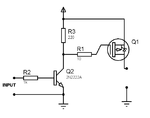yassin.kraouch
Advanced Member level 2

Hi,
i have to design a switching circuit using a msp430, the MOSFET used is
https://www.fairchildsemi.com/ds/FD/FDS9926A.pdf
the microcontroller is https://focus.ti.com/lit/ds/symlink/msp430f133.pdf
i have a trouble in choosing the MSP430 ? can the msp430 be used to switch on/off the MOSFET ? is there any condition in current ??
can i drive 6 mosfet gate using one single PIN that generate PWM, or i should use 6 pin from the MSP430 that generate PWM for each gate ?
please i need help asap
i have to design a switching circuit using a msp430, the MOSFET used is
https://www.fairchildsemi.com/ds/FD/FDS9926A.pdf
the microcontroller is https://focus.ti.com/lit/ds/symlink/msp430f133.pdf
i have a trouble in choosing the MSP430 ? can the msp430 be used to switch on/off the MOSFET ? is there any condition in current ??
can i drive 6 mosfet gate using one single PIN that generate PWM, or i should use 6 pin from the MSP430 that generate PWM for each gate ?
please i need help asap


